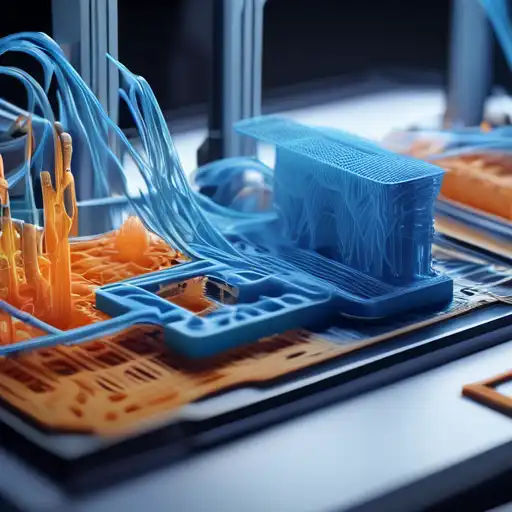Introduction to 3D Printing
3D printing, also known as additive manufacturing, is a process of creating three-dimensional objects from a digital file. This innovative technology builds objects layer by layer, offering unparalleled flexibility in design and manufacturing. From prototyping to production, 3D printing is revolutionizing industries worldwide.
How 3D Printing Works
The 3D printing process begins with a digital 3D model, which is sliced into thin layers by specialized software. The printer then builds the object by depositing material layer by layer until the entire object is formed. Materials used can range from plastics and metals to ceramics and even biological materials, depending on the application.
Applications of 3D Printing
3D printing has found applications in various fields, including healthcare, where it's used for creating prosthetics and implants; aerospace, for lightweight components; and even in the food industry for intricate designs. The possibilities are endless, with new applications being discovered regularly.
Healthcare Innovations
In healthcare, 3D printing is used to create custom prosthetics, dental implants, and even bio-printed organs. This technology allows for personalized medicine, improving patient outcomes and reducing costs.
Aerospace and Automotive
The aerospace and automotive industries benefit from 3D printing through the production of lightweight, complex parts that reduce weight and improve fuel efficiency. This not only saves costs but also contributes to environmental sustainability.
The Future of 3D Printing
As 3D printing technology continues to evolve, its potential to disrupt traditional manufacturing processes grows. With advancements in materials and printing speeds, 3D printing is set to become a cornerstone of future manufacturing, offering sustainable, efficient, and customizable solutions.
Sustainability and 3D Printing
3D printing promotes sustainability by minimizing waste through additive processes, unlike traditional subtractive manufacturing. This, combined with the ability to recycle materials, positions 3D printing as a green technology for the future.
Challenges and Opportunities
Despite its potential, 3D printing faces challenges such as material limitations and high costs for industrial-grade printers. However, ongoing research and development are addressing these issues, paving the way for broader adoption.
Conclusion
3D printing is more than just a technological innovation; it's a paradigm shift in how we think about manufacturing and design. By enabling the creation of complex, customized, and sustainable products, 3D printing is truly creating the future layer by layer. As the technology matures, its impact across industries will only deepen, heralding a new era of manufacturing.
